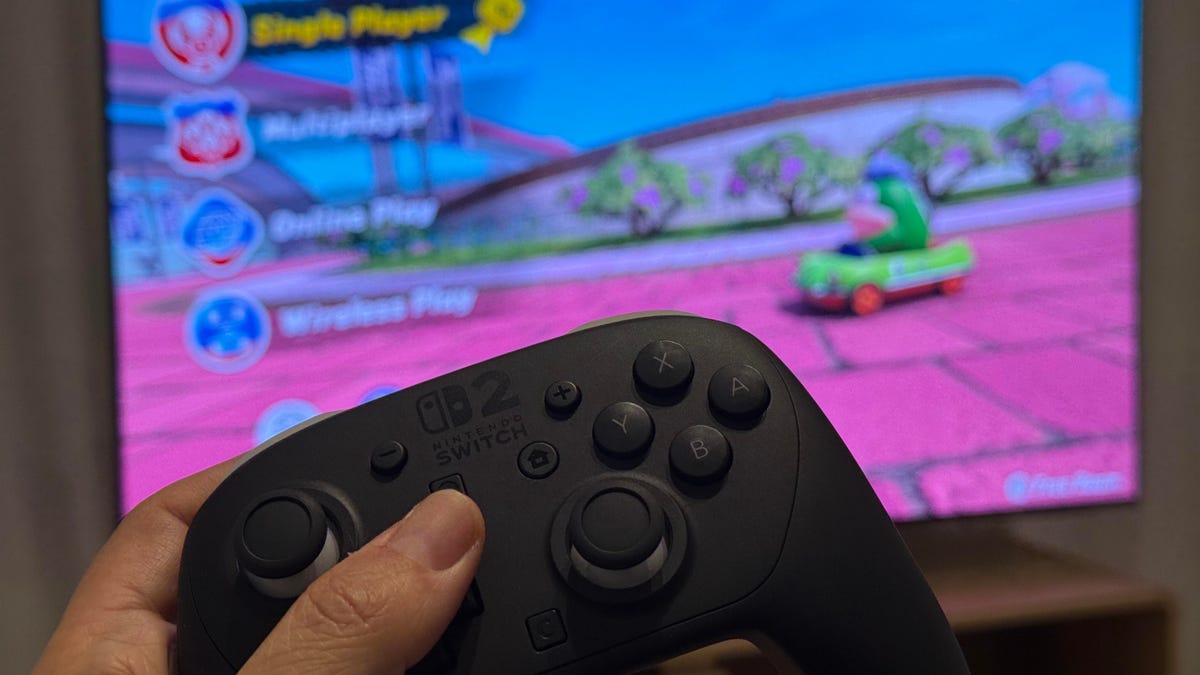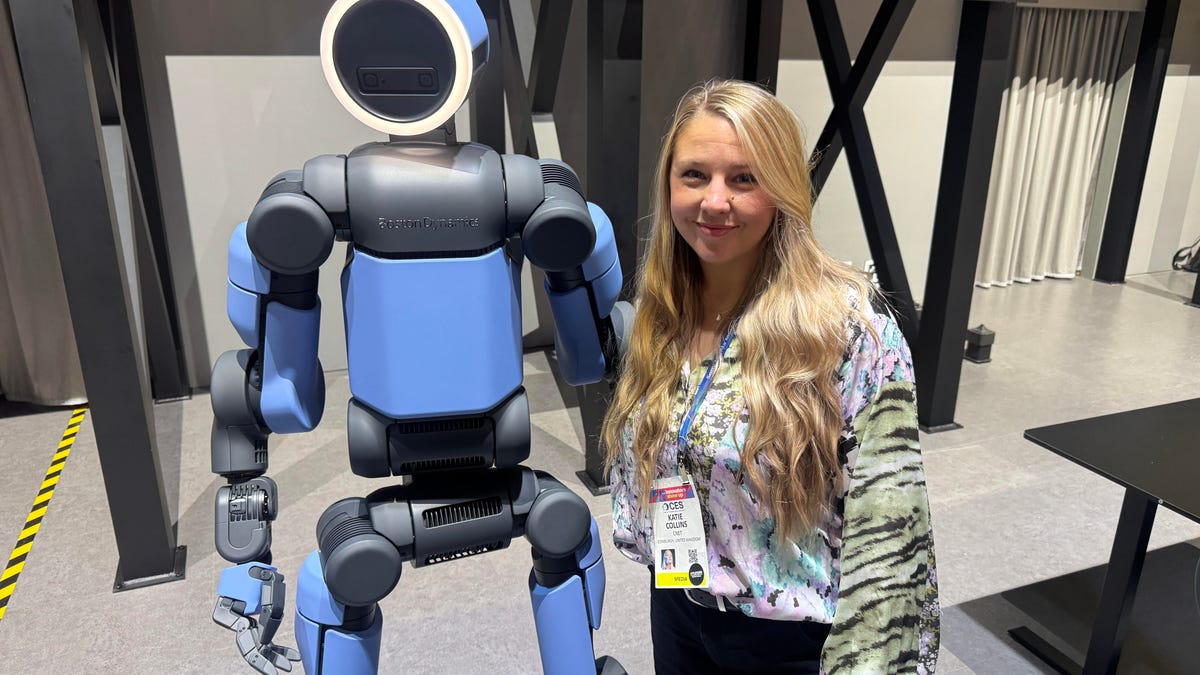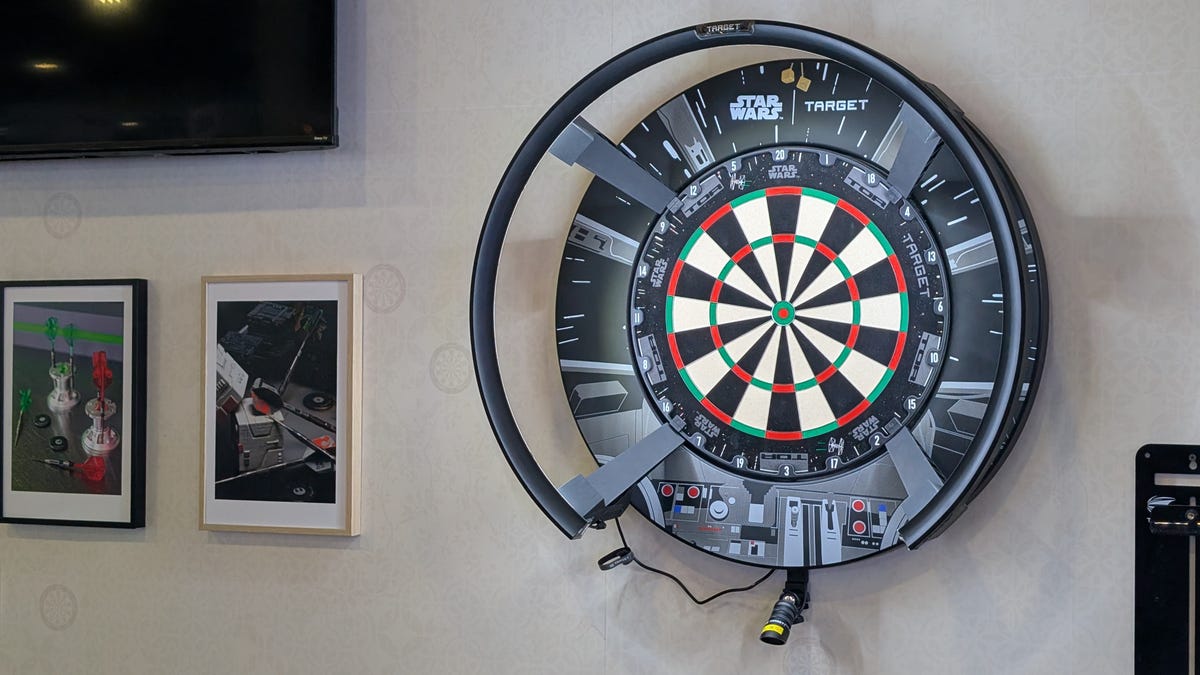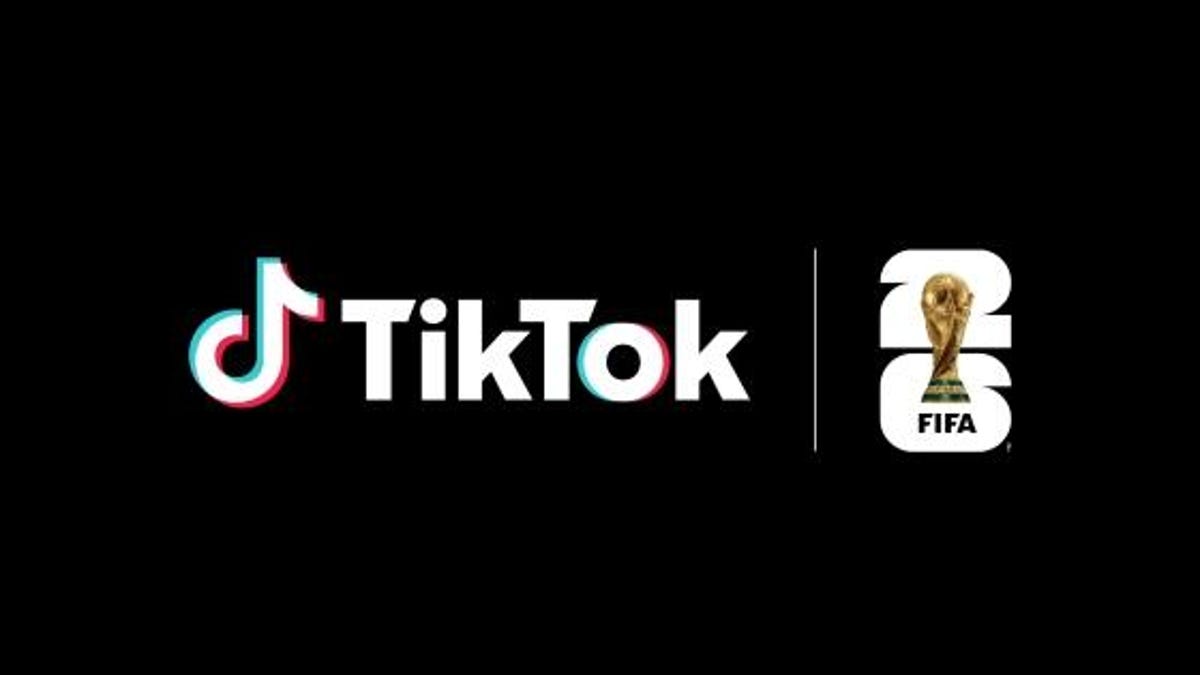Technologies
I Played Hours of Mario Kart World and Used GameChat on the Switch 2. I’m Hooked
From the chaos of 24-player races to the fun of group chats to the shrug that is Welcome Tour, the Switch 2 holds a lot of potential. But is it enough to buy right now?

Mario Kart World on the Switch 2 is a lot more interesting when you can see your friend’s face floating over the kart you’re trying to beat. I’m sitting with some folks from CNET’s sister site IGN and someone from Nintendo as I’m desperately trying to hang in a Knockout Tour competition, and we’re playing with the Switch 2 Camera connected and tracking our faces. Each of our four faces ends up broadcast into the game, floating over our respective vehicles. It’s live video, too: You can stick out your tongue or roll your eyes. Or, as one person did, zoom in on just your ear.
Nintendo is trying its best to show off how its new console is better than the first-gen Switch models. After a full day playing the Switch 2 a couple of months ago, I recently got a second full-day dive ahead of its June 5 launch — more time with Mario Kart World and Nintendo Switch 2 Welcome Tour, Nintendo’s only exclusive first-party Switch 2 games at launch. And I finally used GameChat, the console’s new multiperson audio/video chat feature.
I don’t have a Switch 2 to review yet, so I can’t really nail down my feelings about the full experience just yet. But in these early looks, I’m getting a sense that the Switch 2 is a console that, while showing promise, is something you can also easily wait on. That said, GameChat’s a welcome new feature; camera-connected play is surprisingly addictive (and sort of magical), and Mario Kart World is a blast, especially in wild multiplayer matches. After trying 24-player multiplayer, I don’t know if I can go back.
GameChat: Nintendo’s audio-video hangout zone
My 12-year-old tends to play games by starting a FaceTime chat with his friends, and then playing games while keeping his chat on. Sometimes they’re playing together, sometimes they’re not. I kept thinking about that when getting a brief chance to try Switch 2 GameChat at a Nintendo demo event, which basically aspires to do the same thing.
GameChat, which you start by pressing the right Joy-Con’s new C button, connects up to 12 players via audio (or four with video) into a little group. Friends have to be preinvited to GameChat via your own friends list on the Switch 2, making it a deliberate process that’s parent-friendly but not that spontaneous-feeling. Once that’s done, though, chats are fast to start up.
You can control turning your microphone, camera feed or game feed on and off while in chat. You can also hide your menu screens and just show your game once you’re playing it. You’re either just hearing friends, or seeing split-screen views of up to three others showing their faces, or the games they’re playing, or both.
The $55 Switch 2 Camera is sold separately, and it adds your face. There are a few clever modes that can either show your whole background in a picture-in-picture, cut out your face and body to overlay onto the game footage or zoom in to frame your face (or another part of your face/body you want to track) in a circle.
Video quality for both your face and game footage isn’t great, but it’s enough to feel connected to see what your friends are doing (and emoting). No one has to be playing the same game together, so it’s more of a way to just share what you’re up to at the same time. It’s really more of a hangout room where you can chat and maybe also play games together.
I got a second demo of camera-connected multiplayer in Mario Kart World, which we did in the same room, but it shows the possibilities of GameChat and multiplayer in other ways. Cleverly, the camera could track and zoom in on all four of our faces at the same time, displaying them separately on-screen as overlays on our karts. It almost felt like augmented reality magic, and reminded me of some of the other tricks I saw in Mario Party Jamboree, which is getting a camera-focused update over the summer.
Mario Kart World: Multiplayer is a blast, so is wandering
I still don’t know if any new Mario Kart game can truly top Mario Kart 8 Deluxe’s 96 courses (including DLC), but Mario Kart World is a lot of fun… and something I can’t wait to explore more.
I spent some time with Nintendo’s big Switch 2 launch game in April, but got hours more to dive into wandering around, trying out all the modes, and playing online with 23 others. I got hooked.
Mario Kart World’s best feature is its wandering style: Everything is spread across a huge land, and you can just tool around and discover secrets or suddenly end up on other courses, or parts of courses. In its Free Roam mode, I just kind of tried to find things, mainly P-Switch challenges, which start up little timed events to earn awards, similar to challenges in Super Mario 3D games.
The courses I tried looked to be unique from lap to lap, unfolding over territory that eventually can lead to other courses if you’re playing in Versus or Knockout Tour modes. Once a race is done, your trip to the other course is still part of the race. It adds variety and changes up how some races even feel, depending on which one you’re heading to next, but also feels like it’s a departure from the more static lap-based courses from older Karts. It’s a lot more like Forza Horizon games in style, which I actually love.
Multiplayer in 24-player modes is total chaos. Many of the courses are wider than previous Mario Kart games to accommodate all those karts, and it can get pretty Mad Max. It also makes surviving feel even more victorious. Knockout Tour is the star of the show. This new mode, which I tried in April, is a survival race that eliminates a certain percentage of players every course. It feels like a 99-player-type survival game, but I like this even better. I once made it to sixth place among a bunch of game journalists, which was enough of a win for me.
Also, the characters? I love them. I played as a cow. I played as a dolphin. I played as a crab. There are so many weird options. It’s lovely.
I also tried Battle Mode, where 24 of us zoomed around pretty large course maps to either collect coins as fast as we could, or try to pop each others’ balloons. It was fun too, but felt more random, less purposeful than the races.
I mostly played in TV-docked mode, which showed off the Switch 2’s graphics quality: clearly better than Switch 1, but not shockingly so. I also tried handheld mode, and I’m impressed by the quality of the Switch 2’s LCD 1080p display, even if it isn’t OLED.
As good as it all is, though, I don’t think it’s enough on its own to justify a Switch 2 purchase. Not yet. Still, if you’re getting a Switch 2, this game is obviously your must-get, and it feels like it earns that label.
Switch 2 Welcome Tour: It should’ve been free
I spent more time in the weirdly charming Welcome Tour (about an hour and a half), and still can’t tell how much content this «game» has in it. Welcome Tour is literally a walk-through of the Switch 2’s features, accompanied by quizzes, demos and some minigames to try. It clearly should’ve been included on the Switch 2, much like Astro’s Playroom on the PS5. Instead, Nintendo is charging $10 for it — that’s absurd.
Then again, I’d be tempted to get it at launch just to have some things to play with that show off the Switch 2 extras, like mouse mode. Welcome Tour also has lots of weird facts about the Switch 2’s construction and design, like how its speakers are designed and housed. Lots of deep, nerdy stuff, and why is this presented in an app like this? I don’t know, and I wish Nintendo had just made a weird collection of mini-games like 1-2 Switch instead.
I unlocked some of the areas in the game, finished some quizzes, tested Joy-Con haptics, looked at frame-rate and HDR demos, and did some arcade-ish minigames using the Joy-Con as a mouse. I want to play it more, but I can’t justify the existence of this as a standalone paid game at all. Neither should Nintendo. There’s still time to change course and make this a free download.
Switch 2 still seems great, but not necessary yet
One final note: I walked away from my day of play feeling like I’d be happy to carry around a Switch 2, but unable to justify to friends why they should get one now. It doesn’t feel like a console that demands to be bought yet, and it’s too much of an «enhanced Switch» type of experience at the moment. That will certainly change once more exclusive and enhanced games emerge, but that could take another year. I’ll have more thoughts when I review the Switch 2 soon, but I do see more potential in GameChat and the connected camera than I expected.
Technologies
I Got Up Close and Personal With Boston Dynamics’ New Atlas Robot
Before Atlas takes its first steps into the world of work later this year, I found myself face-to-face with CES 2026’s most talked-about robot on the show floor.

When I say that I went hands-on with the new Boston Dynamics Atlas robot, I mean that I actually held hands with it. This humanoid robot, which CNET just awarded the Best Robot of CES Award, is one of the most advanced in the world, and I couldn’t pass up the opportunity to get up close and personal with it.
This product version of the robot, which is set to be shipped to Hyundai factories imminently to start working, has been the talk of CES this year. The specific Atlas robot I encountered was a static model that wasn’t turned on or fully operational. Our interactions were, therefore, sadly one-sided. Still, I ran my hands over its soft-touch plastic shell and gently prodded at its finger joints, wondering how it would feel if they gripped me back.
People tend to have varying feelings about humanoid robots — understandable given that they are built to some degree in our image, while also usually being stronger than us, with «brains» that we don’t fully understand. Atlas definitely evokes contradictory emotions for me — even more so when I stood face-to-face with it.
I’m in awe of the engineering, a little fearful of its capabilities, hesitant about what it could mean for the future of humanity and charmed by its design and styling. The periwinkle blue iteration of Atlas that I met on the show floor at CES 2026 almost bears more resemblance to a Dyson product than it does the industrial robots that defined Boston Dynamics’ early days, when it was best known for its work with DARPA.
«There’s a lot of really specific things about this robot that probably look a little weird,» said Zachary Jackowski, Boston Dynamics VP and general manager of Atlas. He pointed to the legs, which he described as «like nothing anyone else was doing.»
Atlas’ thighs are narrow set and in line with the torso, while the calves are wider set, attached to their upper counterparts with a circular joint. This robot is, in fact, all subtle curves and soft lines. There are no harsh edges or stark angles.
During a year when CES has been flooded with humanoid robots, Atlas definitely does stand out due to its design. It appears both less classically human and less industrial than some of its peers, while also lacking the often intimidating, featureless faces they tend to exhibit. Instead, it has two low-set cameras resembling eyes placed where you’d usually expect a mouth to be. Its face is a perfect flat circle, defined by an LED halo that gives it a somewhat Pixar lamp effect.
I asked Jackowski why Boston Dynamics decided to skew so relatively unhuman with this version of its humanoid. «Well, it’s not a human,» he said. «It projects the wrong first impression about a robot to have it pretend to be something that it’s not.»
Particularly in the early days of humanoids, he added, robots won’t have anything like human-like intelligence. People should look at it and see it for what it is — a tool for performing tasks safely and efficiently.
In fact, most of the design decisions were made to keep Atlas as simple, scalable and safe as possible, Jackowski said. I remark that there’s some irony in thinking of a humanoid robot as simple, given the complexity of the technology and development process to bring Atlas to life.
The key to making it simple, Jackowski said, is having a strong enough grasp of the technology to «accomplish the complex thing of building a humanoid robot,» but then being able to take it apart and understand that you can use fewer computers and actuators in it while achieving the same results.
And it’s essential to Boston Dynamics that Atlas is perceived as simple. After all, it’s a general-purpose humanoid, which might eventually be sent far and wide to fulfil all manner of roles. Jackowski calls it the «ultimate generalist.»
Simplicity aside, there are aspects of Atlas that Jackowski believes set it apart from other humanoids at the show. «The repairability of this robot is crazy good,» he said. «The runtime is crazy good. The strength is unlike anything.»
From working in Hyundai’s manufacturing plants, Atlas’s job trajectory is to eventually graduate to many of the same industrial environments where Boston Dynamics’ Spot robot works, before moving to bussing tables in the service industry and eventually into the home. The robot will evolve between now and then, Jackowski said. However, this could be an early glimpse of the type of humanoid that will eventually be our housemate.
That’s some way away, though, which is probably for the best. As I gaze up at Atlas, which I’d guess is around the same height as my husband, my feeling is that, however impressive Atlas is, I’m still not ready for it to move in.
Technologies
This Star Wars Dartboard Has a Secret That Will Stop You From Using the Force to Win
This cool dartboard has cameras to track your score and keep you honest

Right in the middle of the high-tech show floor at CES 2026 sits a pub called the Bull and Barrel with some of the coolest dartboards I’ve seen. Target Darts was showcasing its collaboration with both Star Wars and Xbox. Darts may not be for everyone, but I love «shooting some arrows» in my basement with the family. I also love anything Star Wars themed, so these tick a lot of boxes.
The basic Star Wars set comes with a branded board and wall protector that resembles the cockpit of the Millennium Falcon and costs $200. The board is of very high quality, with a tight-knit sisal fiber face, and the protector is thick enough to keep stray shots out of your drywall. The graphics are cool too, with nods to the original Falcon and even have the gold dice hanging above.
The big tech twist to this board, though, is the Omni light ring around the outside. It uses four cameras to track your dart’s position, then sends that info to an app that keeps score. The scoreboard is crisp and clear and uses the voice of legendary darts announcer John McDonald to narrate your game. It’s pretty great to hear his voice announce my terrible scores.
The Omni also allows you to connect with other players worldwide via shared scoreboards. I love the idea of my dad having a board at his house or playing a match with me at my house. It adds a feeling of community to home darts that you don’t normally get outside a pub or bar.
The Omni is a much more expensive proposition than the Star Wars set, coming in at $650, but if you’re serious about the game and a Star Wars fan, it looks to be a great investment.
Technologies
TikTok and FIFA Team Up for World Cup 2026 Coverage
A new team-up aims to make this summer’s tournament more accessible for fans.

If you hadn’t already planned on swiping on TikTok videos of the 2026 FIFA World Cup, a new partnership between the social media platform and tournament organizer FIFA could motivate you to start stretching out your thumbs.
As the soccer tournament nears — it will take place from June 11 to July 19 and span 16 host cities in Canada, Mexico and the US — TikTok will become FIFA’s first «preferred platform.» According to a FIFA statement on Thursday, this entails TikTok providing more coverage of the World Cup, including original content and even livestreaming of some portions of matches.
Don’t miss any of our unbiased tech content and lab-based reviews. Add CNET as a preferred Google source.
You can use the FIFA World Cup 2026 hub on TikTok to find content, match tickets and viewing information, as well as participation incentives such as custom stickers and filters.
In the US, World Cup games will air live across Fox and FS1. If you don’t have cable, you can get a live TV streaming service, such as YouTube TV, which includes those channels. Additionally, every match will stream live on Fox One and the Fox Sports app.
«FIFA’s goal is to share the exhilaration of the FIFA World Cup 2026 with as many fans as possible,» FIFA Secretary General Mattias Grafström said.
-

 Technologies3 года ago
Technologies3 года agoTech Companies Need to Be Held Accountable for Security, Experts Say
-

 Technologies3 года ago
Technologies3 года agoBest Handheld Game Console in 2023
-

 Technologies3 года ago
Technologies3 года agoTighten Up Your VR Game With the Best Head Straps for Quest 2
-

 Technologies4 года ago
Technologies4 года agoBlack Friday 2021: The best deals on TVs, headphones, kitchenware, and more
-

 Technologies4 года ago
Technologies4 года agoGoogle to require vaccinations as Silicon Valley rethinks return-to-office policies
-

 Technologies4 года ago
Technologies4 года agoVerum, Wickr and Threema: next generation secured messengers
-

 Technologies4 года ago
Technologies4 года agoOlivia Harlan Dekker for Verum Messenger
-

 Technologies4 года ago
Technologies4 года agoiPhone 13 event: How to watch Apple’s big announcement tomorrow
